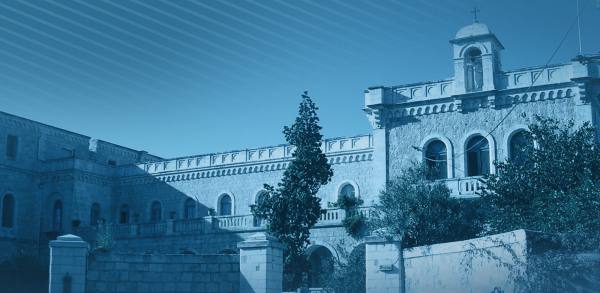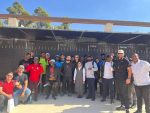Learning is always enriching, especially when it includes the opportunity for an academic trip. On October 28, 2024, Ratisbonne’s students had a unique experience as they embarked on their first archaeological excursion of the semester. Making this dream a reality was truly a blessing, particularly given the current political situation in Israel. We continue to pray for peace in Israel and around the world.
Before diving into the details of our visit, I must say that studying theology at Ratisbonne is a privilege, as it allows us to walk in the footsteps of Jesus. Imagine traveling from Jerusalem to Emmaus one morning—could that bring similar feelings to those the disciples felt after the Resurrection? Picture visiting Beth Shemesh, or the “House of the Sun,” which perhaps earned its name from the Canaanites’ sun worship. This is the very place mentioned in 1 Samuel 6, where the Ark of the Covenant was returned by the Philistines.
Below is a brief overview of this unforgettable archaeological excursion.
Our first stop was at the Saxum Visitor Centre. The purpose of this centre is to connect people from all over the world to the Holy Land through a thoughtfully designed space. Here, we followed a biblical journey that spans from the time of the patriarchs to the era of Jesus. The setup even included historical reconstructions of cities like Nazareth, offering insight into the setting of parables Jesus used. This exhibit highlighted the depth of Jesus’s knowledge and his ability to teach within his context.
After Saxum, we visited Emmaus Nicopolis. Although not specifically mentioned in the Old Testament, we learned that Joshua fought the kings of Canaan between Gabaon and Azeqa, near the present-day location of Emmaus, as recorded in Joshua 10:12-13. St. Jerome commented that this area likely existed in the Old Testament within the territory of the tribe of Dan. In the time of Jesus, Emmaus existed as a small village where, as recounted in the Gospels, the resurrected Jesus appeared to his disciples, who recognized him during the breaking of bread. Evidence identifying this site has been confirmed over the centuries, particularly in the 18th to 20th centuries.
Our journey continued to Beth Shemesh, where our imaginations were vividly engaged. Though now a quiet, seemingly abandoned site, this location was once a vital Israelite city in the Sorek Valley, dating from the middle Bronze Age to the Iron II period. It was here, as described in 1 Samuel 6, that the Israelites joyfully welcomed the Ark of the Covenant when it was returned by the Philistines. This site is also significant as the setting for events related to Samson’s birth and burial, as recounted in Judges 13 and 16.
Our day concluded with a visit to the Soreq Avshalom Cave. Stepping into this underground wonder felt like entering another world. Inside, we admired the vast caverns, with intricate formations of stalactites and stalagmites illuminated by special lighting, revealing the cave’s natural beauty.
In conclusion, I extend my gratitude to the administration for organizing this trip, to the participants, and especially to our guide, Fr Yunus Demirci, for his insightful presentations. We look forward with anticipation to future excursions and further discoveries.
Geoffrey Mwangi Kariuki









